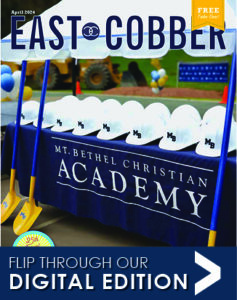From within a world that revolves around the up and coming iGen’ers or members of Generation Z and the prominent Generation X populace, a.k.a. the millennials (meeee-llenials), it is easy to put labels on people like “self-absorbed” or “self-centered” or “self-serving.” While these words are often used to describe today’s youth, these very words were first used in the 17th and 18th centuries. Thus, the “me” concept is not a new one.
But as the “kids” from the Generation X era have now established themselves and started or will soon start families of their own, it may turn out that the self-centered attitude that gave them such a bad rep was merely a result of their age. However, having the access to a worldly audience via social media, the “self” was made more apparent in visual and documented form for that generation.
What you may find interesting are the excerpts below taken from literature of various periods that shows how generations past were being portrayed at the time they were coming of age.
“They think they know everything and are always quite sure about it.” Rhetoric, Aristotle, 4th Century BC
“The beardless youth… does not foresee what is useful, squandering his money.” Horace, 1st Century BC
“Probably there is no period in history in which young people have given such emphatic utterance to a tendency to reject that which is old and to wish for that which is new.” Young People Drinking More, Portsmouth Evening News, 1936
“Parents themselves were often the cause of many difficulties. They frequently failed in their obvious duty to teach self-control and discipline to their own children.” Problems of Young People, Leeds Mercury, 1938
“What really distinguishes this generation from those before it is that it’s the first generation in American history to live so well and complain so bitterly about it.” The Boring Twenties, Washington Post, 1993
“They have trouble making decisions. They would rather hike in the Himalayas than climb a corporate ladder. They have few heroes, no anthems, no style to call their own. They crave entertainment, but their attention span is as short as one zap of a TV dial.” Proceeding with Caution, Time, 2001
What is actually the case can be summed up by Aristotle:
“[Young people] are high-minded because they have not yet been humbled by life, nor have they experienced the force of circumstances.”
A study, “Personality Stability From Age 14 to Age 77 Years,” suggests that our 77-year-old selves would have a hard time identifying with the 14-year-old versions of ourselves. In other words, we change as we grow.

Haylie Kramer is the ECCC PTA Communications Chair. Haylie is also a freelance web content developer, copywriter and editor. She and her husband, Sean, are both born and raised in Cobb County, as are their two children, Savannah, who is in 9th grade and, Clay, who is in first grade.
The youth are not only defined by the numbers that tell their age, but by the limited time they have been alive. They are innocent, inexperienced and oblivious, thanks in part to their wonderful parents who do such a great job at protecting, guiding and defending them from the harsh realities of the world. How many times have you heard a mother say, “I wish they would stay this little forever.” I am willing to bet that mothers didn’t just start experiencing these types of sentiments. The truth is the kids will grow; they will experience; they will learn. They will become informed, seasoned and strong. So, it’s not the parents; it’s not the video games or the music. It’s the love that blooms into a flower that shelters a child from the moment it is known from as many hurtful experiences, as many tears as possible and as many heartaches as can be avoided. These things are inevitable, but if our children only know their own world, and it is a beautiful place to them that they want to share with others, even if it is “me” centered, that’s okay. My world is my children, so it makes sense that they live in that same world.
This article was written by Haylie Krame and originally appeared in the May issue of the EAST COBBER magazine, on page 10. Click here to view the digital edition.







